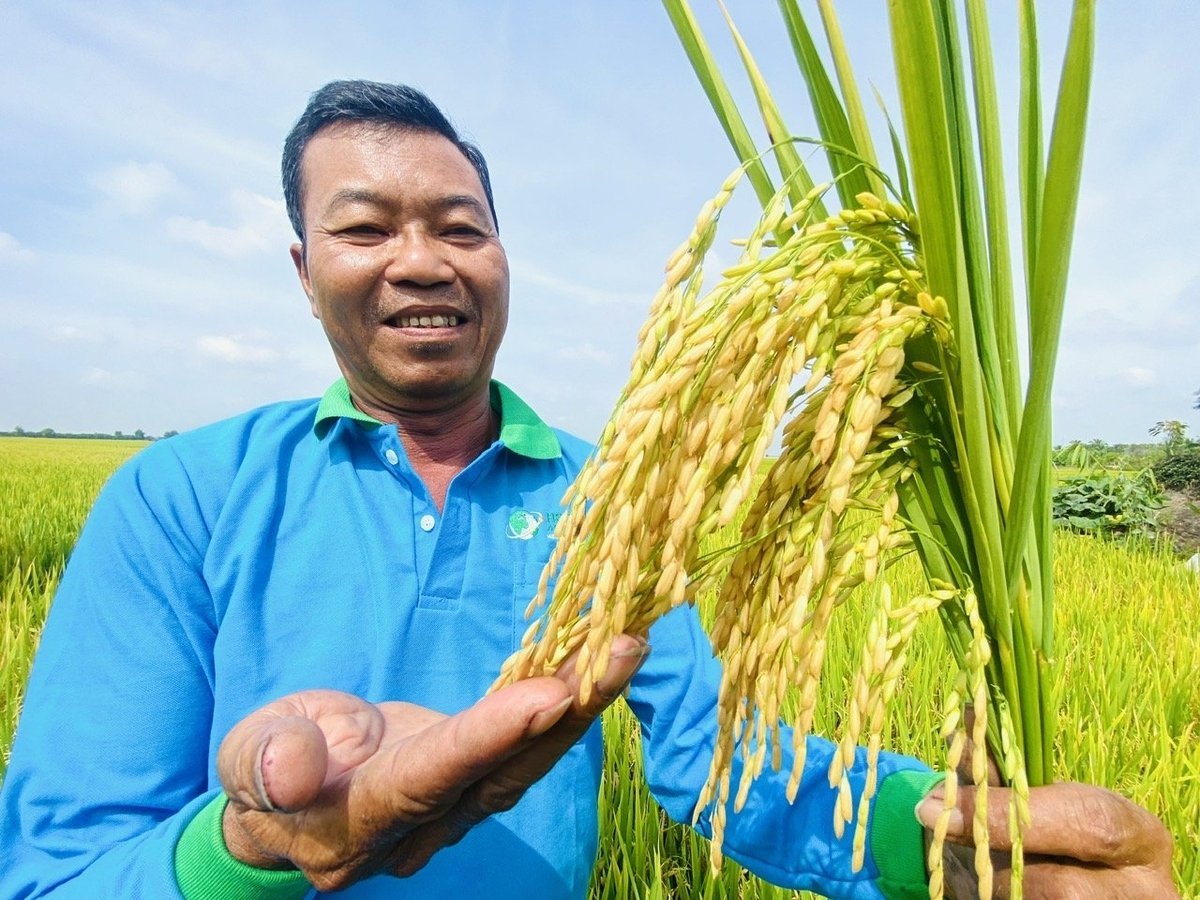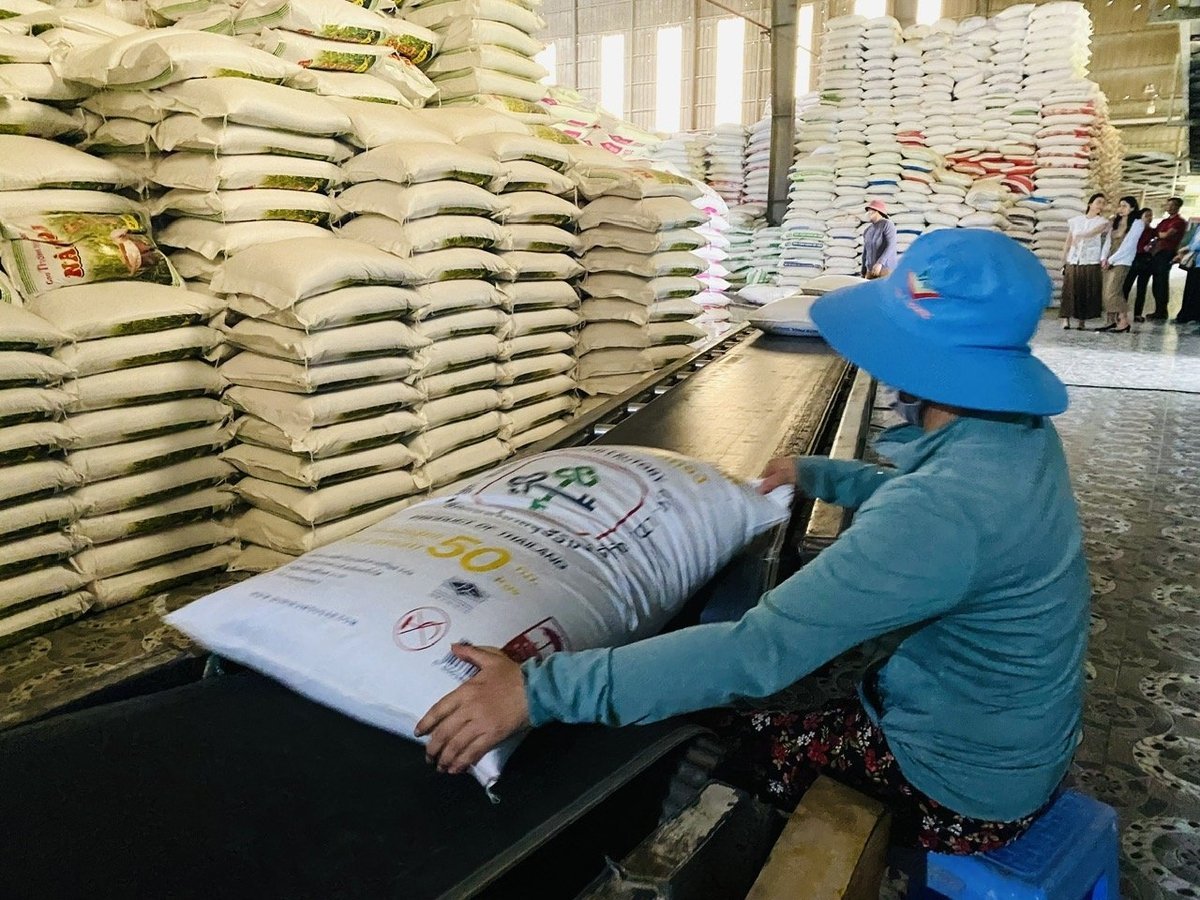May 29, 2025 | 20:41 GMT +7
May 29, 2025 | 20:41 GMT +7
Hotline: 0913.378.918
May 29, 2025 | 20:41 GMT +7
Hotline: 0913.378.918
Currently, the export market is divided into three main categories: regular rice, high-quality rice, and premium rice. Among these, Vietnam primarily exports high-quality rice, which accounts for 60–70% of total exports. Premium branded rice accounts for approximately 15%, while regular rice makes up the remaining 10–15%. Statistics indicate that Vietnam's premium rice segment faces less competition from other exporting countries. Vietnamese rice is now available in many countries, including high-demand markets, thanks to its high quality.
Mr. Nguyen Ngoc He, Vice Chairman of the People's Committee of Can Tho City, stated that Vietnam’s rice sector plays a vital role in ensuring national and global food security. The Mekong Delta accounts for 50% of the country's rice production and over 90% of its rice exports.
However, the rice sector has experienced fluctuations. Farmers’ income from rice cultivation is lower compared to some other agricultural sectors. Additionally, rice production is facing numerous challenges, such as climate change, environmental issues, and increasingly stringent quality requirements.
According to Mr. He, the Project on "Sustainable development of 1 million hectares for specialized farming of high-quality, low-emission rice associated with green growth in the Mekong Delta by 2030" is an opportunity to further promote sustainable development of the rice industry. In recent times, the project has been actively implemented by the Ministry of Agriculture and Environment, as well as localities across the region.

The quality of Vietnamese rice is steadily improving. Photo: Le Hoang Vu.
Mr. Ngo Hong Phong, Director General of the National Authority for Agro-Forestry-Fishery Quality, Processing and Market Development (Ministry of Agriculture and Environment), stated that Vietnam is not only the rice bowl of Southeast Asia but also one of the world’s leading rice suppliers. Vietnamese rice has affirmed its position and brand on the global stage.
Mr. Do Ha Nam, Chairman of the Vietnam Food Association (VFA), shared that in 2024, Vietnam's rice industry made a strong impression, with export volumes surpassing 8 million tons and revenue exceeding USD 4.5 billion, thereby maintaining its position as one of the world's top rice-exporting countries. This reflects relentless efforts and opens up new expectations for the future.
However, to boost exports, it is necessary to balance the supply and demand of rice among relevant parties. At the same time, adjustments are needed in the management of rice import and export activities, which have faced challenges over time, especially following the implementation of Decree No. 01/2025/ND-CP, which amends and supplements several articles of Decree No. 107/2018/ND-CP. In addition, it is essential to strengthen market research, assessment, and demand forecasting for rice imports.

The "1 Million hectares of high-quality rice" project has achieved certain successes, thereby enhancing the value of Vietnamese rice. Photo: Le Hoang Vu.
Mr. Le Thanh Tung, Vice Chairman and Secretary General of the Vietnam Rice Industry Association, presented a comparative analysis of the efficiency between traditional rice farming and participation in the "1 Million hectare of high-quality rice" project. The project promotes practices such as: reducing seed quantity by 50%, cutting nitrogen fertilizer use by 30%, decreasing pesticide application by 30%, lowering post-harvest losses by around 5%, and reducing average greenhouse gas emissions by 5 tons of CO₂ per hectare per crop. These improvements are projected to increase farmers’ profits by approximately VND 5 million per hectare per crop.
However, to achieve the project’s goals, Mr. Le Thanh Tung emphasized the need to strengthen effective connections among actors across the value chain: farmers, service providers, exporters, markets, financial institutions, green rice standards, and low-emission certification. He also called for greater efforts to promote knowledge sharing and exchange of market insights, technology, and practical experience related to the implementation of the one-million-hectare high-quality, low-emission rice model.

In 2024, Vietnam's rice industry made a remarkable mark with export volumes surpassing 8 million tons. Photo: Le Hoang Vu.
Dr. Tran Ngoc Thach, Director of the Mekong Delta Rice Research Institute, shared that the Mekong Delta currently cultivates many high-yield rice varieties with excellent grain quality and strong resistance to pests and diseases, such as OM5451, OM18, and Dai Thom 8. These varieties account for 70–80% of the total production area and contribute to more than 85–90% of Vietnam’s rice export volume.
While Vietnamese rice holds a strong position in the long-grain white rice segment, it still faces limitations in the premium fragrant rice segment and in the development of high-value rice varieties for processing and nutrition. Therefore, the participation of individuals, enterprises, and public research institutions is essential to diversify the rice variety structure. This will open up greater opportunities for businesses to tap into high-value niche markets both domestically and internationally.
In addition to varietal diversification, it is also important to develop stable raw material zones with consistent yield and rice quality. Achieving this requires significant effort and cooperative participation from multiple stakeholders.
Mr. Le Hong Phuc, Deputy General Director of the Vietnam Bank for Agriculture and Rural Development (Agribank), stated that following the Government’s directive on promoting solutions to balance supply and demand, and to stabilize and sustainably develop the rice market, Agribank has swiftly implemented various credit programs for the rice industry.
$ 1 = VND 25.751 - Source: Vietcombank.
Translated by Phuong Linh
/2025/05/25/4127-3-073637_820.jpg)
(VAN) Thanks to the promotion from an FAO-implemented project, vegetable production in greenhouses in Moc Chau has seen strong development, from 1.5 hectares in 2021 to nearly 50 hectares in 2024.

(VAN) FAO has recently supported USD 140,000 to implement the project 'Risk mitigation human-animal interface risks through disease control initiatives in pig farming.'

(VAN) The People's Committee of Tra Vinh province has approved an adjustment to the investment policy for the Green Hydrogen Plant project, increasing its area to approximately 52.76 hectares.
![Reducing emissions from rice fields: [2] Farmers’ commitment to the soil](https://t.ex-cdn.com/nongnghiepmoitruong.vn/608w/files/news/2025/05/05/dsc08881jpg-nongnghiep-140632.jpg)
(VAN) Clean rice cultivation model in Thuong Tan commune, Bac Tan Uyen district, is assisting local residents in achieving sustainable agriculture by substantially reducing costs, increasing productivity, and protecting the environment.

(VAN) At the conference to disseminate Resolution No. 68, AgriS introduced its digital agricultural ecosystem and reaffirmed its commitment to accompanying the Government in promoting private sector development and sustainable agriculture.

(VAN) 'Blue Ocean - Blue Foods' initiative is designed to restore marine ecosystems and establish sustainable livelihoods for local communities by cultivating a minimum of 1,000 hectares of cottonii seaweed in the first three years.
/2025/05/21/4642-3-112707_603.jpg)
(VAN) The V-SCOPE project has made direct contributions to three out of six pillars of the Comprehensive Strategic Partnership between Vietnam and Australia.